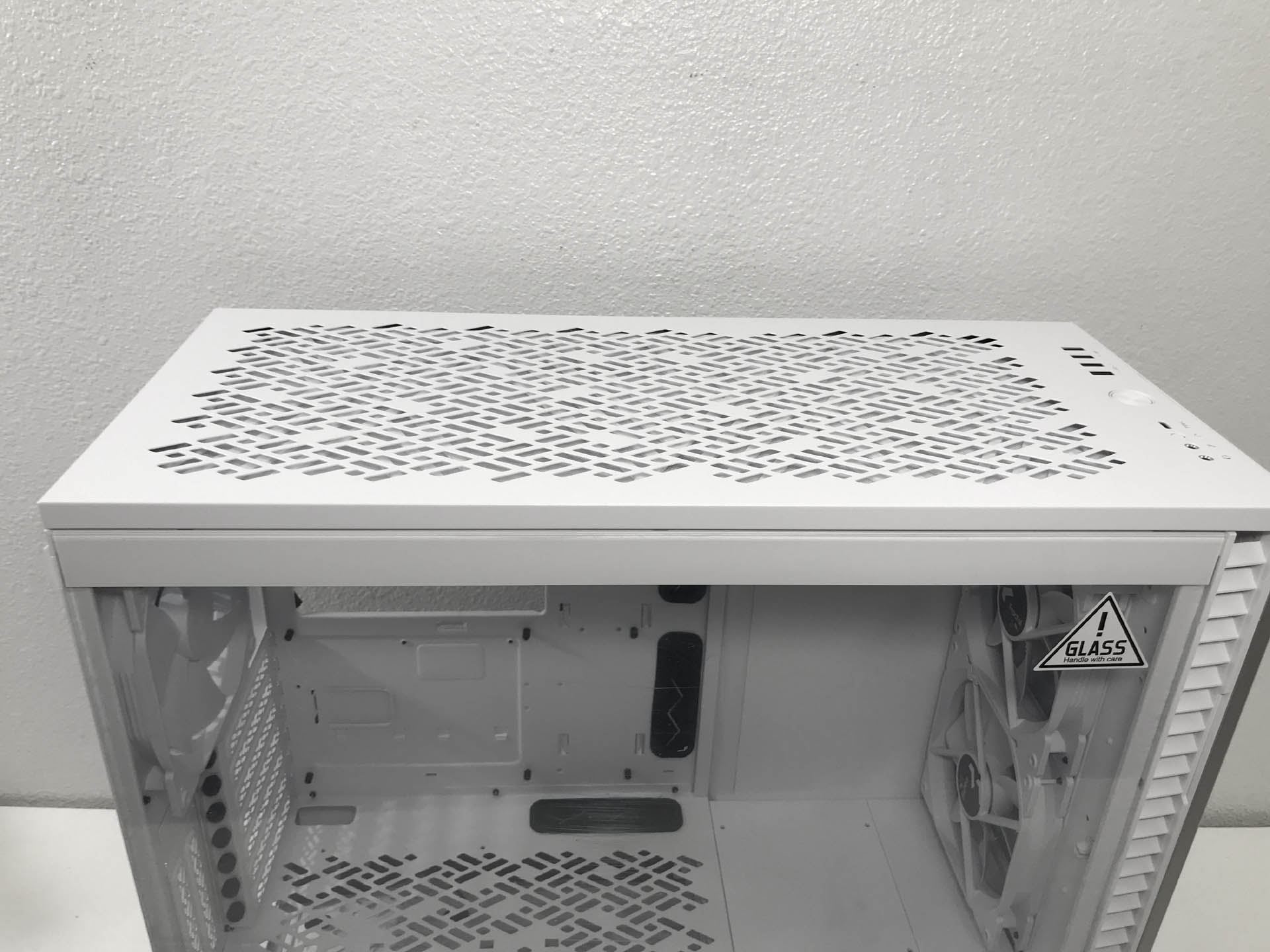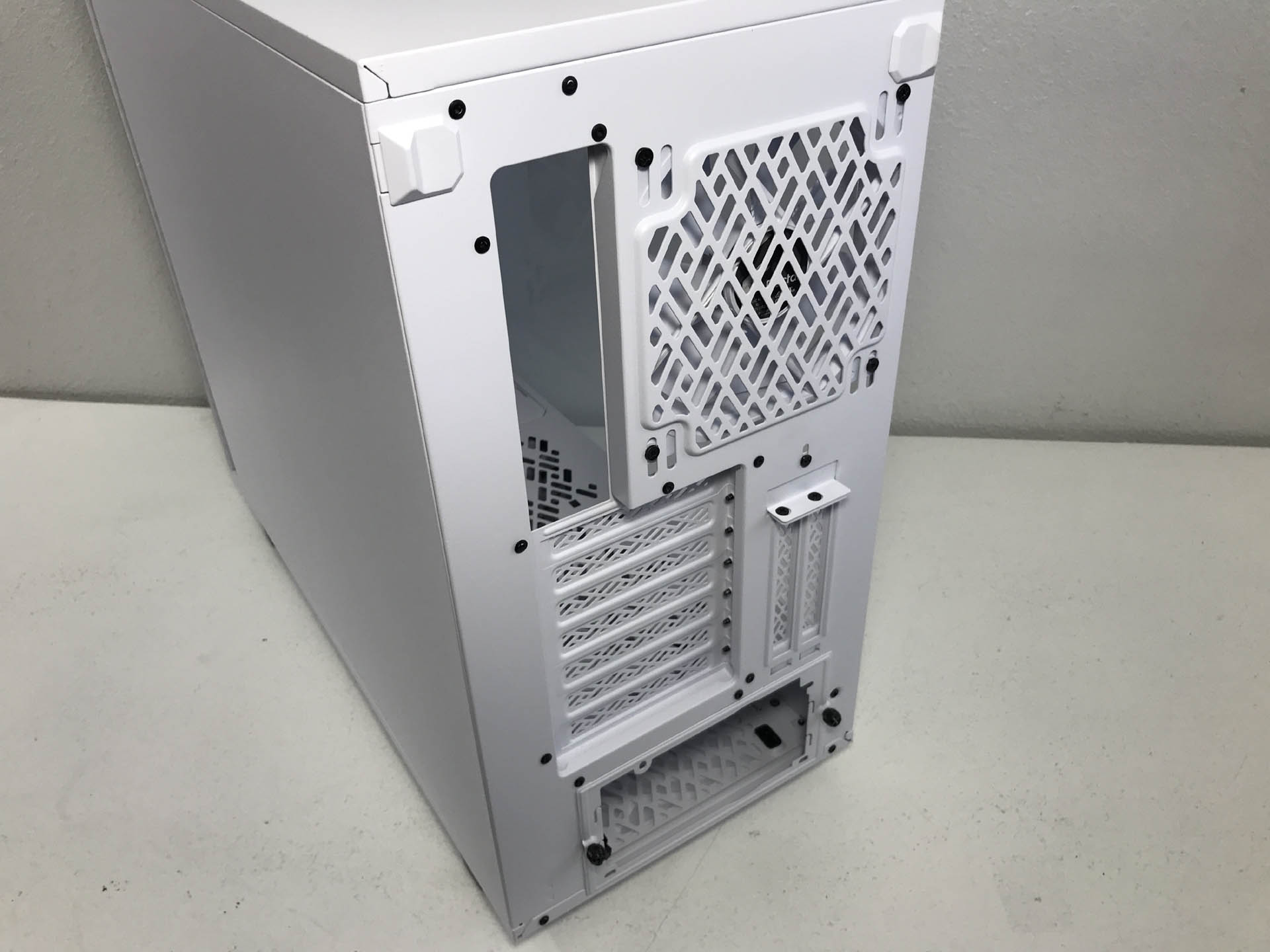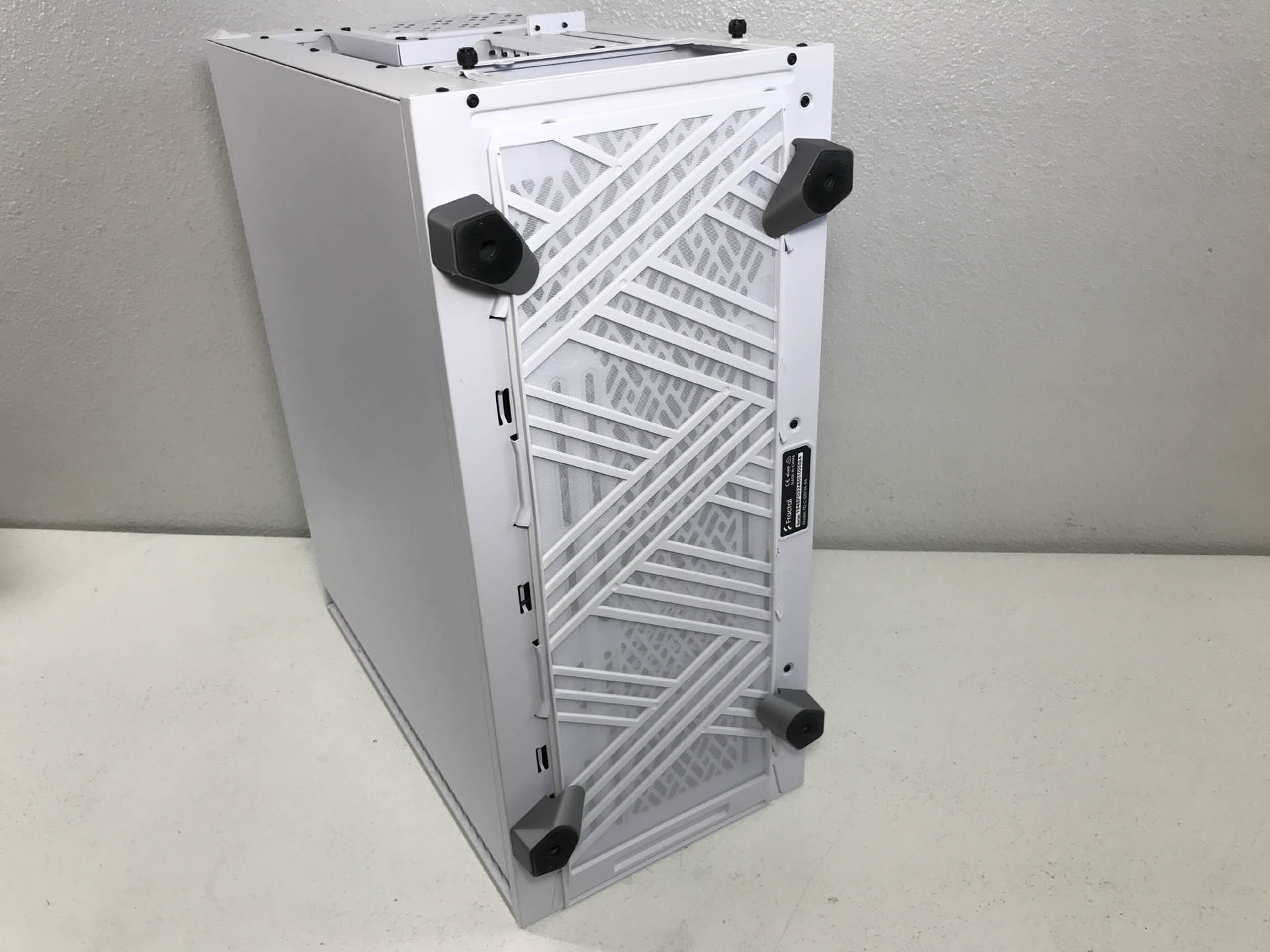Tom's Hardware Verdict
For enthusiasts looking for an extremely versatile chassis with a dual-layout interior, the Fractal Design Define 7 is a feature packed case with outstanding thermal and acoustic performance.
Pros
- +
Tempered-glass side panel
- +
Filtration system
- +
Good thermal performance
- +
Low noise
- +
Water cooling support
- +
USB 3.1 Gen 2 Type-C
- +
Versatility
Cons
- -
No RGB lighting
Why you can trust Tom's Hardware
Fractal Design's Define series has long been a favorite in the enthusiast community for its class-leading performance and quality construction. We have the white tempered-glass version of the Fractal Design Define 7 mid-tower ATX case on the test bench today to see what it has to offer.
Specifications
| Type | Mid-Tower ATX |
| Motherboard Support | Mini-ITX, Micro-ATX, ATX |
| Dimensions (HxWxD) | 21.5 x 9.5 x 18.7 inches (547 x 240 x 475 mm) |
| Space Above Motherboard | 3 inches (76.2mm) |
| Card Length | 18.4 / 12.4 inches (467 / 315mm) |
| CPU Cooler Height | 7.3 inches (185mm) |
| Power Supply | 9.8 inches (250mm) |
| Weight | 35 lbs (15.9 kg) |
| External Bays | 1 x 5.25-inches |
| Internal Bays | 2 x 2.5 inches / 7 x 3.5 inches |
| Card Slots | 7x (+2 vertical) |
| Ports/Jacks | 2x USB 3.0, 2x USB 2.0, audio/mic jacks, 1x USB 3.1 Gen 2 Type-C |
| Other | dual layout design, ventilated top panel |
| Front Fans | 2x 140mm (Up to 3 x 120 / 140mm) |
| Rear Fans | 1x 140mm |
| Top Fans | ✗ (Up to 3 x 120 / 140mm) |
| Bottom Fans | ✗ (Up to 2 x 120 / 140mm) |
| Side Fans | ✗ |
| Damping | Yes |
| Warranty | 1 Year Limited |
Features
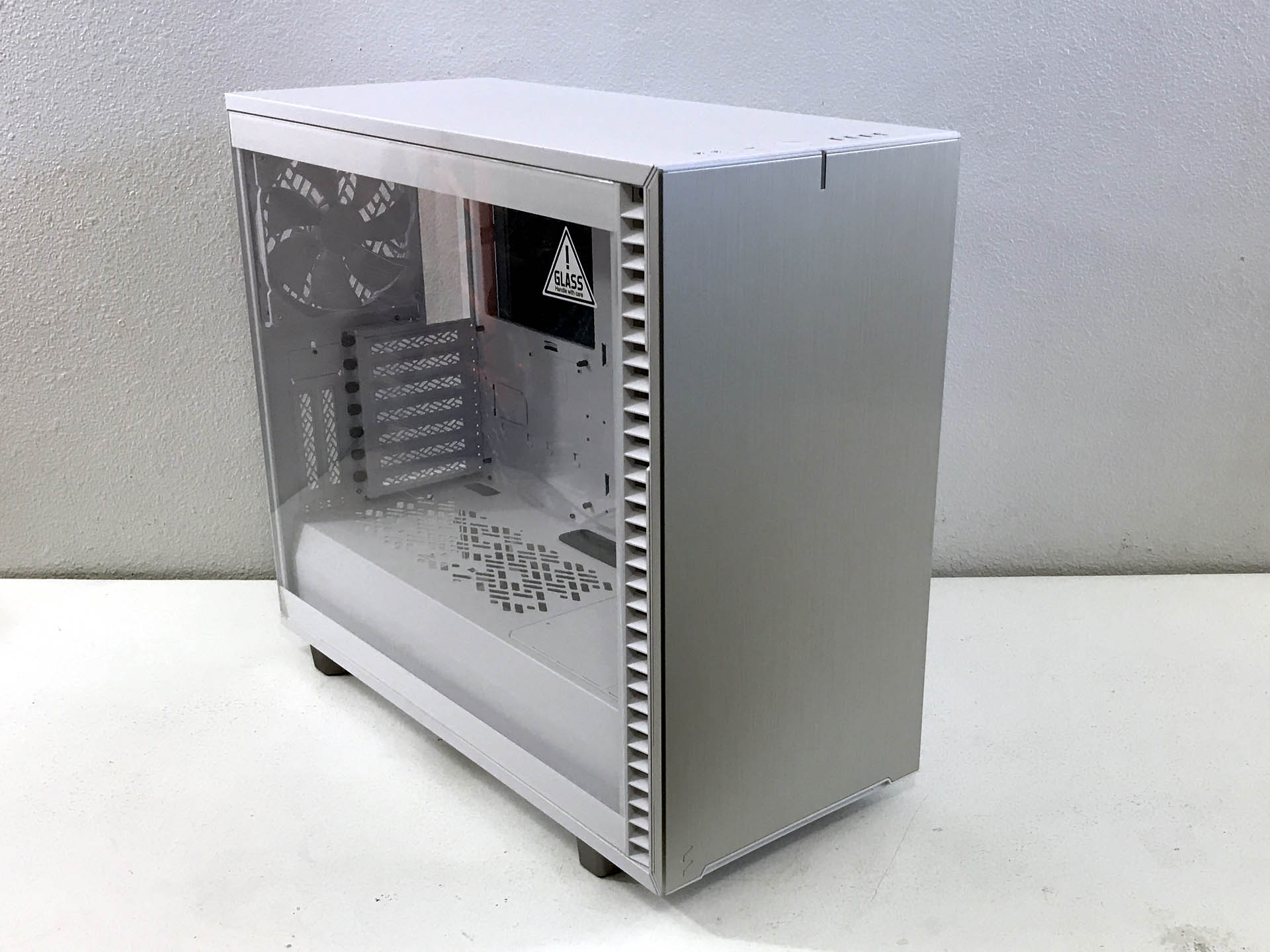


The Fractal Design Define 7 bears a remarkable resemblance to the Define R6, R5 and Define S. The cases look so much alike that one could be forgiven for confusing them at first glance. The company seems to be going with the "if it isn't broke don't fix it" line of thinking in terms of aesthetics and style.
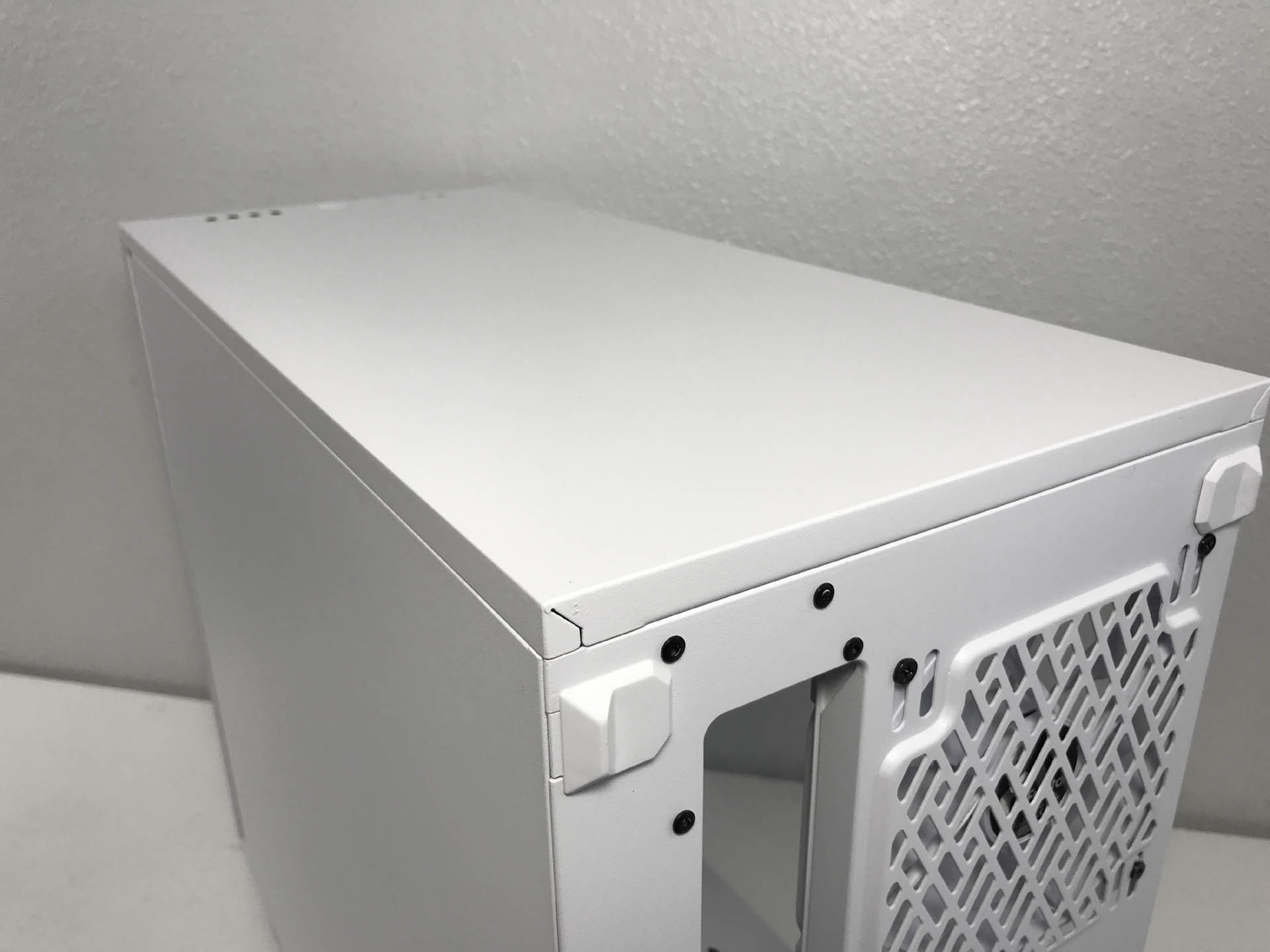
The Fractal Design Define 7 works with two different internal layouts, "open" and "storage." Open layout resembles many current mid-tower ATX cases on the market today. An open main chamber equipped with a pair of 3.5-inch hard drive mounts under the PSU tunnel and a couple SSDs mounts tucked neatly behind the motherboard tray. Storage mode allows for up to 14 hard drives to be installed in the chassis by moving a portion of the hard drive tray to the opposite side of the chassis and installing the additional hard drive trays included in the accessory box.
The Fractal Design Define 7 mid-tower chassis comes in black, grey or white with the option of a tempered glass side panel. Depending on the color you choose, the tempered glass side panel is available in clear, light or dark tinting. The chassis measures 546.8 x 240 x 474.2 mm and tips the scales at just over 15.9 kg (35 pounds). When outfitted with a tempered glass side panel is priced at $170 / £154 or $150 / £144 without it. The chassis comes with a two-year limited warranty.
Out of the box, the top panel of the Define 7 is solid, though the chassis comes with an additional vented top panel for those of you that prefer the added ventilation versus the silence provided by the solid panel and its thick black sound damping material. Just below the surface of the top panel, you will find a large plastic mesh fan filter, and below that are mounting locations for three 120mm or two 140mm fans.
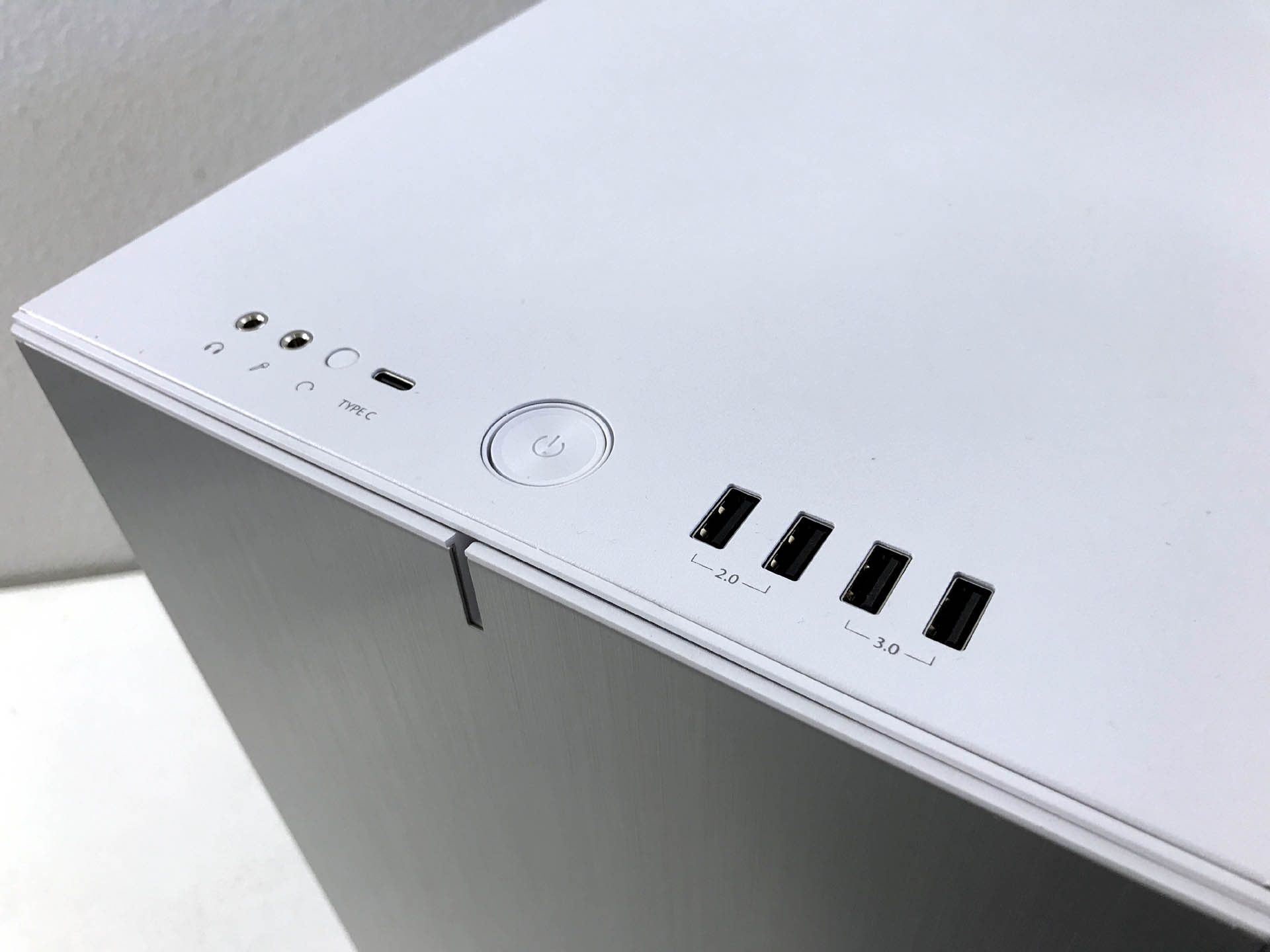
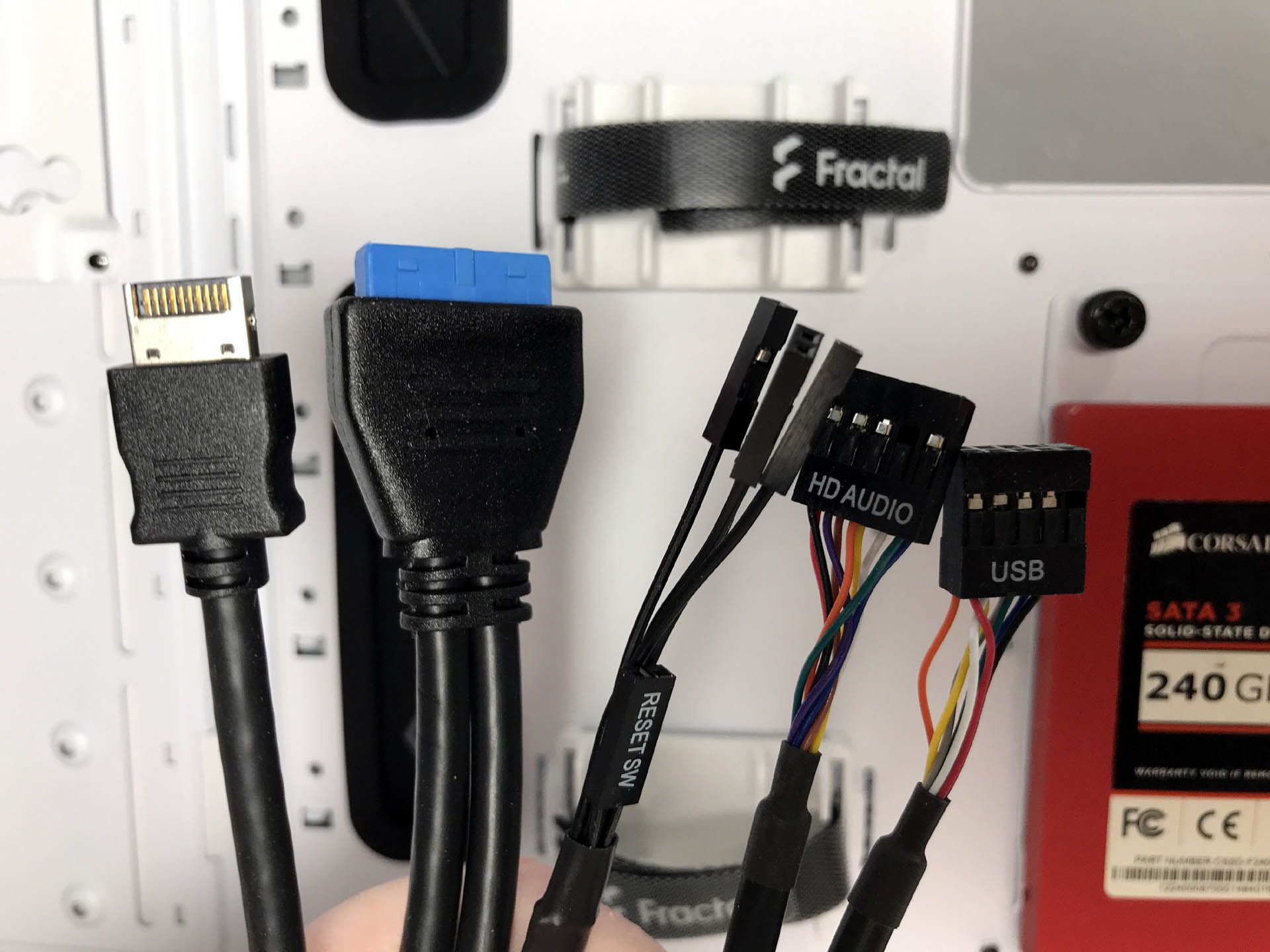
Front I/O includes two USB 3.0 and two USB 2.0 ports, a USB 3.1 Gen 2 Type-C port is nestled between the power and reset buttons. Rounding out the list of ports are the headphone and microphone jacks.


As with previous models in the Define series line, such as the Define R5 and Definite R6, the front of The Fractal Design 7 chassis features a large plastic door with a thin brushed aluminum insert and reversible swing that's lined with a thick layer of sound damping material. Behind the door you will find a single 5.25 inch drive bay opening and a large removable plastic mesh filter covering mounting locations for three 120mm or two 140mm fans. Vertical vents line both sides of the front fascia, extending from the top to bottom of the case.
Get Tom's Hardware's best news and in-depth reviews, straight to your inbox.
Around the back, you'll find an opening for a bottom-mounted PSU, seven expansion card slots plus two vertical, a standard motherboard I/O area and an exhaust fan mounting location that supports both 120mm and 140mm fans. The exhaust fan mounting location features slotted screw holes that lets you adjust the position of the fan to fine tune airflow or make room for system components.
The entire bottom of the chassis is covered by a large plastic mesh filter that is removable from the front. The filter covers two mounting locations for 120mm or 140mm fans and the power supply fan opening. The four large rubber-coated feet keep the case approximately a half inch off the ground.
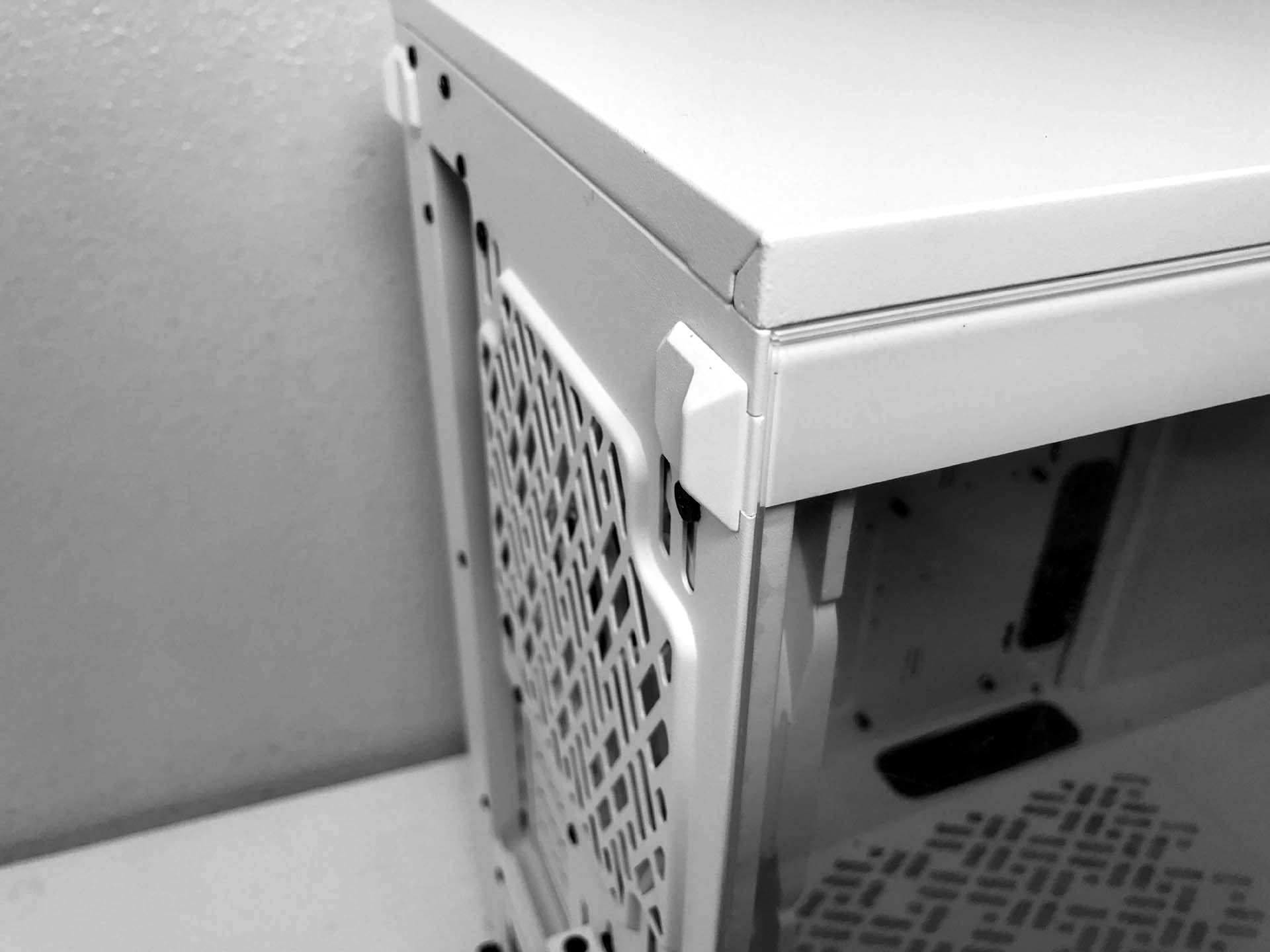
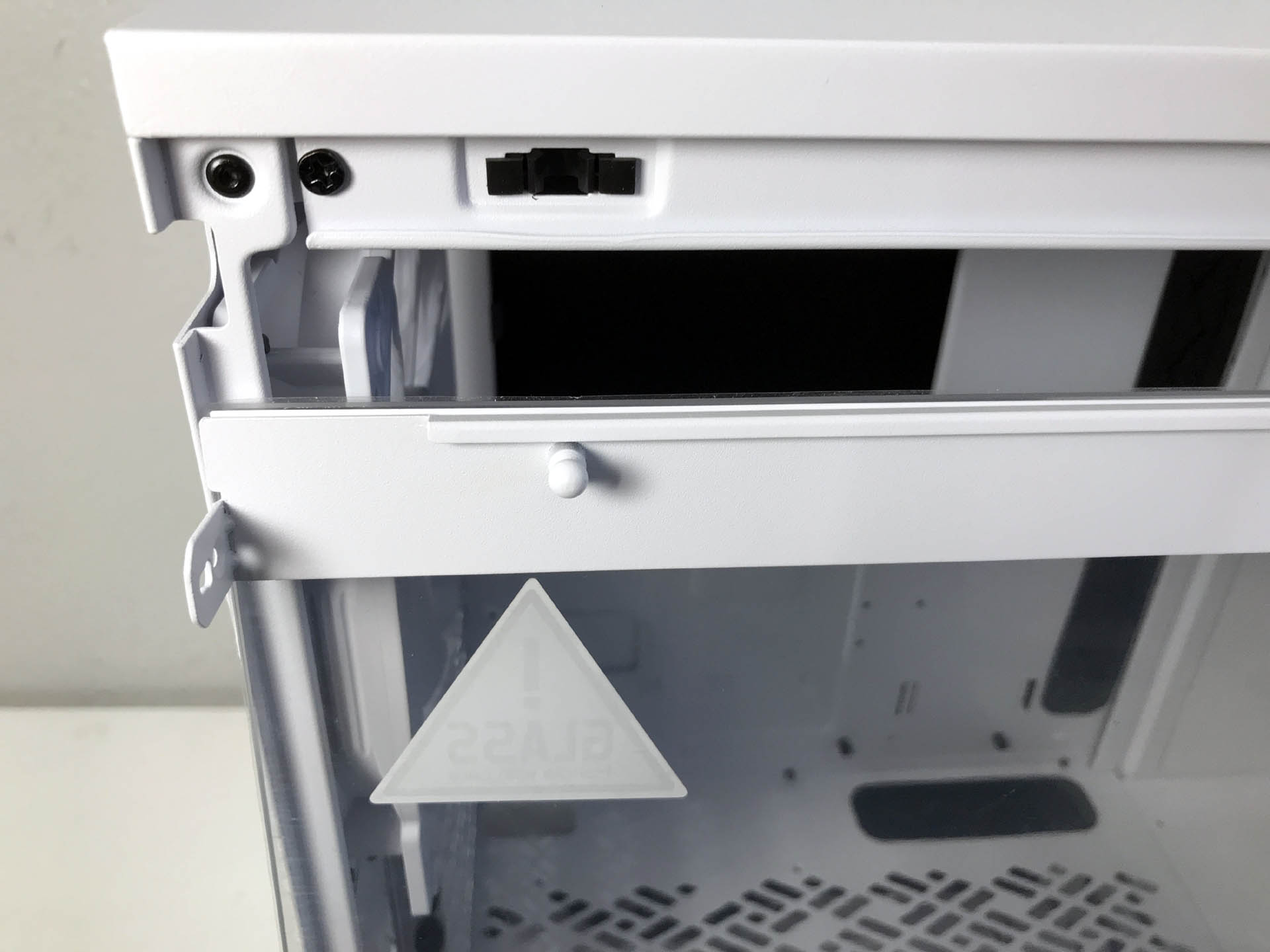
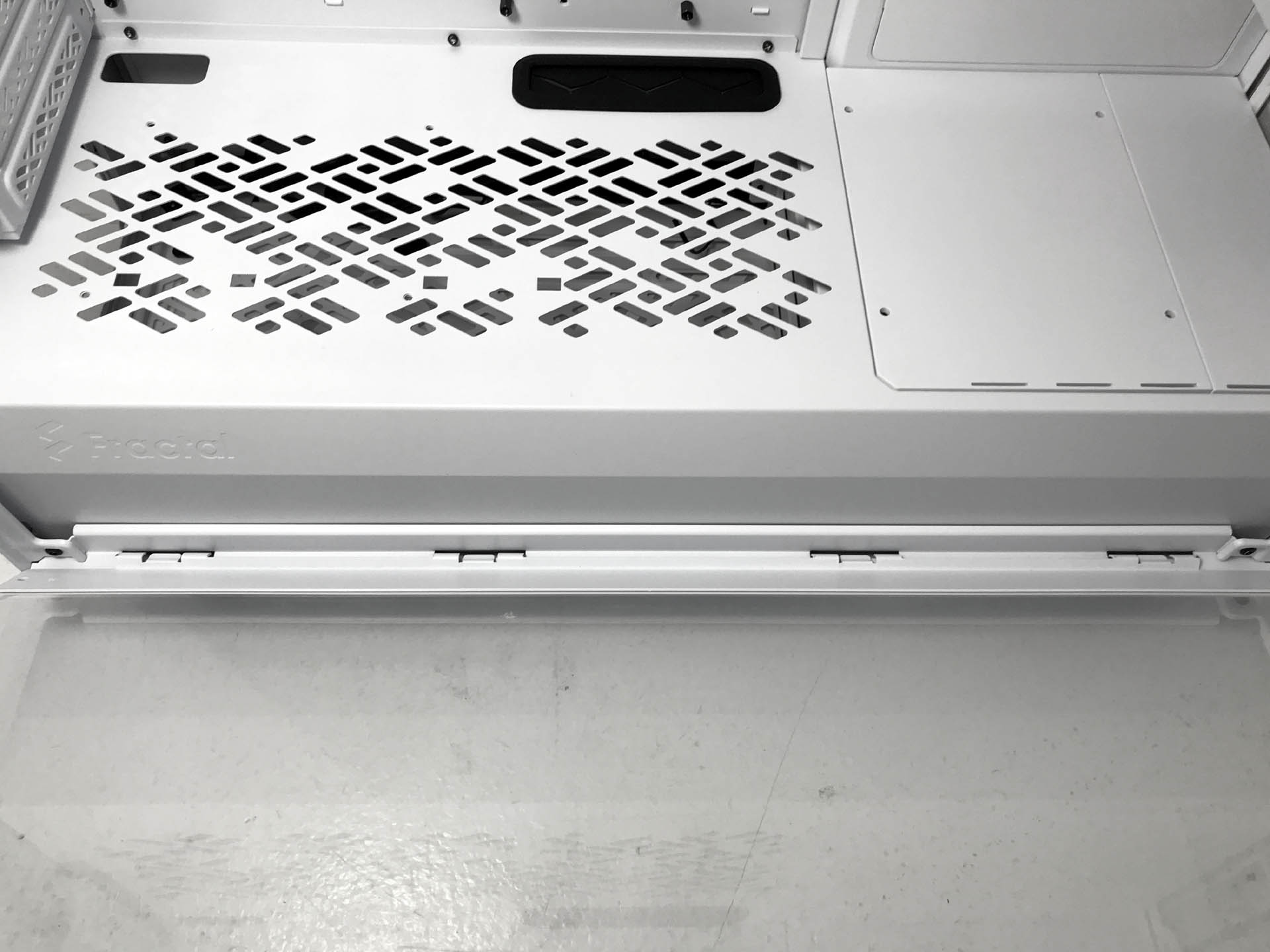
The tempered-glass side panel is attached to a metal frame that eliminates the need for rubber-coated locating pins or hinges. A push-to-lock latching mechanism keeps the panel firmly in place. The panel on the opposite side of the chassis is a solid stamped steel panel with a thick layer of sound damping material and is held in place by the same push-to-lock system as the tempered glass panel.
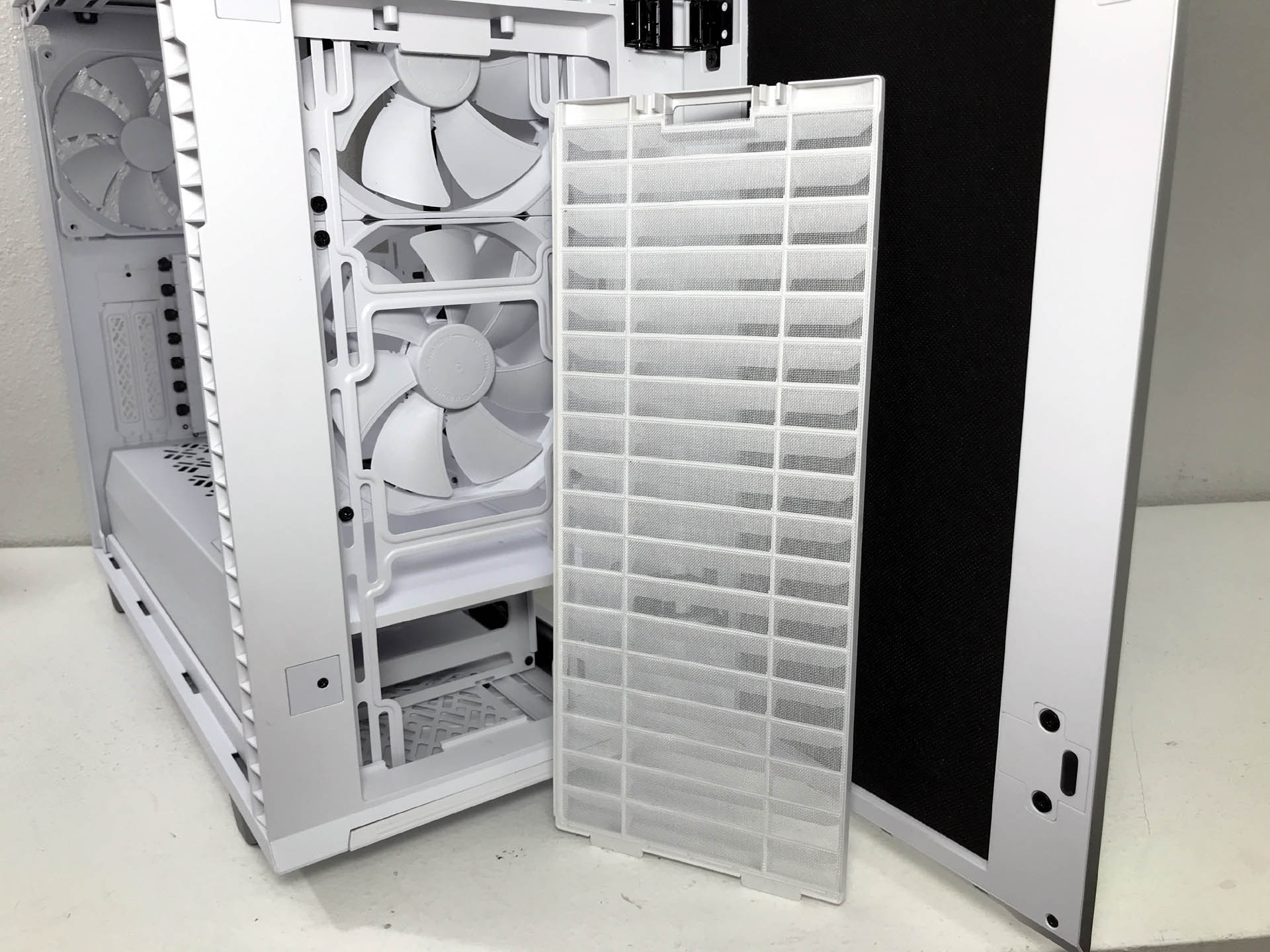

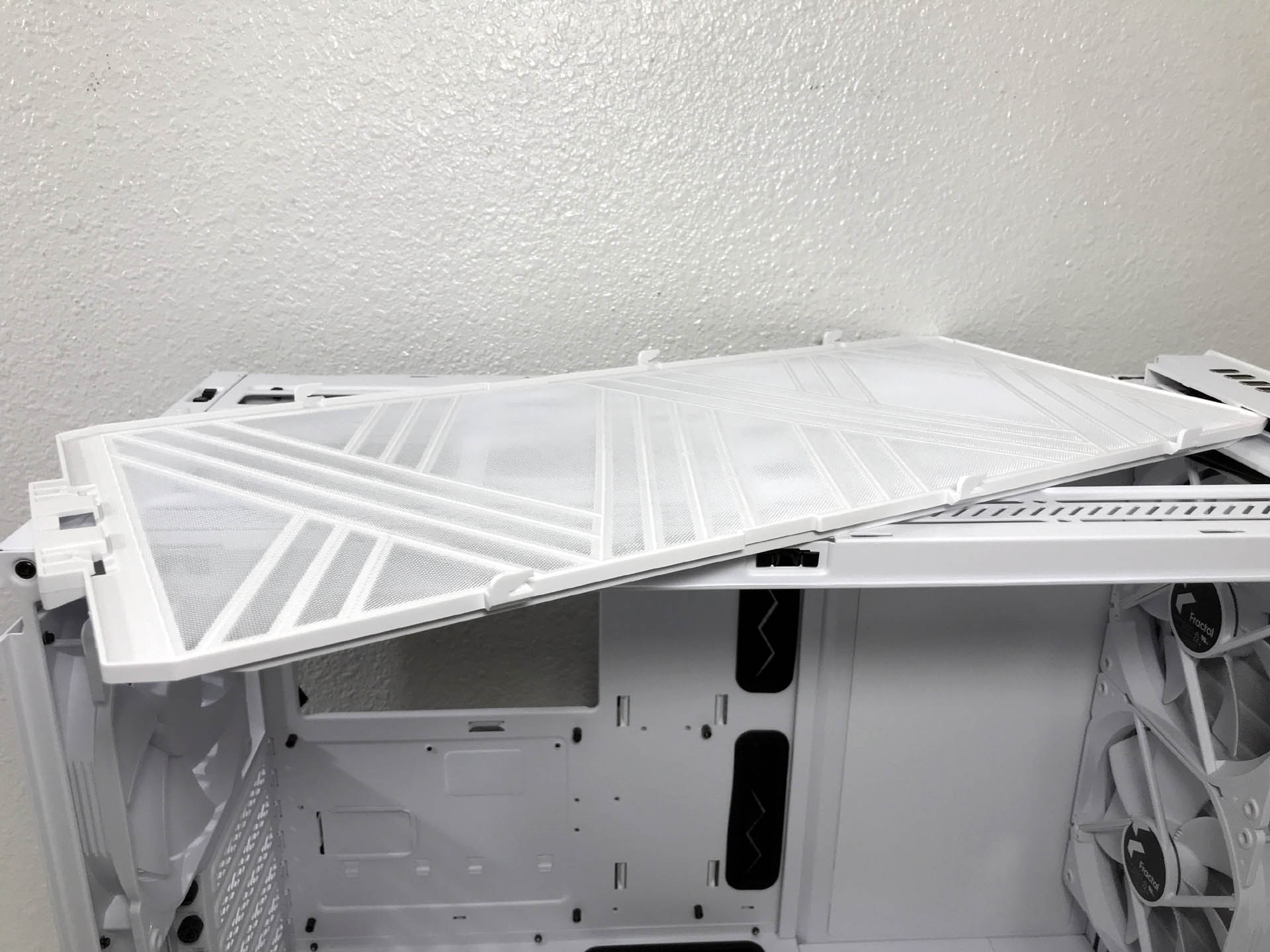
The Fractal Design Define 7 is equipped with an excellent fan filtration system, with large removable nylon filters on every fan mounting location including the power supply. Fractal Design wisely designed the filter on the bottom of the case to be removed from the front, eliminating the need to move your system for filter maintenance and cleaning.
The overall look of Fractal Design's Define series cases is one of the features that makes it popular with gamers and enthusiasts alike. The Define 7, dressed out completely in white, including the fans, is an extremely attractive chassis.
MORE: Best Cases
MORE: All Case Content
Current page: Specifications and Features
Next Page Hardware Installation and Test ConfigurationSteven Lynch is a contributor for Tom’s Hardware, primarily covering case reviews and news.
-
Newtonius That moment in 2020 when the only CON for a PC case is, "No RGB lighting". We've become moths attracted to RGB lights.Reply -
sstanic Shouldn't "No RGB lighting" go into the pros column? Also, where's the handle to pick it up? Or we shouldn't vacuum our homes for 4-5-ish years until we change our PCs?Reply -
Newtonius Replysstanic said:Shouldn't "No RGB lighting" go into the pros column? Also, where's the handle to pick it up? Or we shouldn't vacuum our homes for 4-5-ish years until we change our PCs?
Well, it is a box. Simply lift with your legs. -
King_V I'd like something quiet but with good cooling like this, but 35 lbs is . . uh . . a lot. Then again, I also won't need the ability to convert to "storage" type of feature.Reply
I am pretty impressed with the combination of cooling ability and quiet, though. -
Crashman Why are you putting cases on the ground? If you come to my workspace, you fill find that I put mine on a stand. You will find that some people have a shelf, and that others have room on their desks. For those who have neither, you will find a finished floor to the left or right of the desk.Reply -
namtrooper81 Reply
What? Lift with my legs like some kind of bodybuilding savage!? ;)Newtonius said:Well, it is a box. Simply lift with your legs. -
Nick_C Reply
Indeed - it's an elegant box - and RGB is, for some, a waste of power and heat.sstanic said:Shouldn't "No RGB lighting" go into the pros column? Also, where's the handle to pick it up? Or we shouldn't vacuum our homes for 4-5-ish years until we change our PCs?
